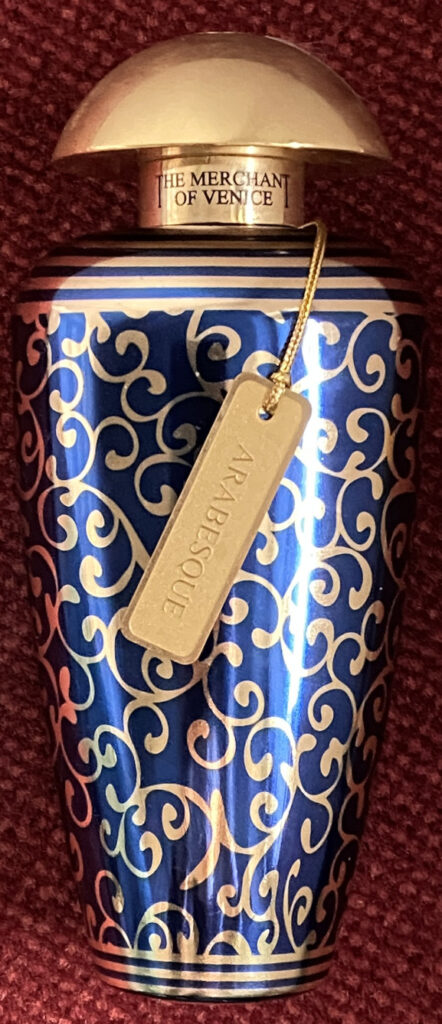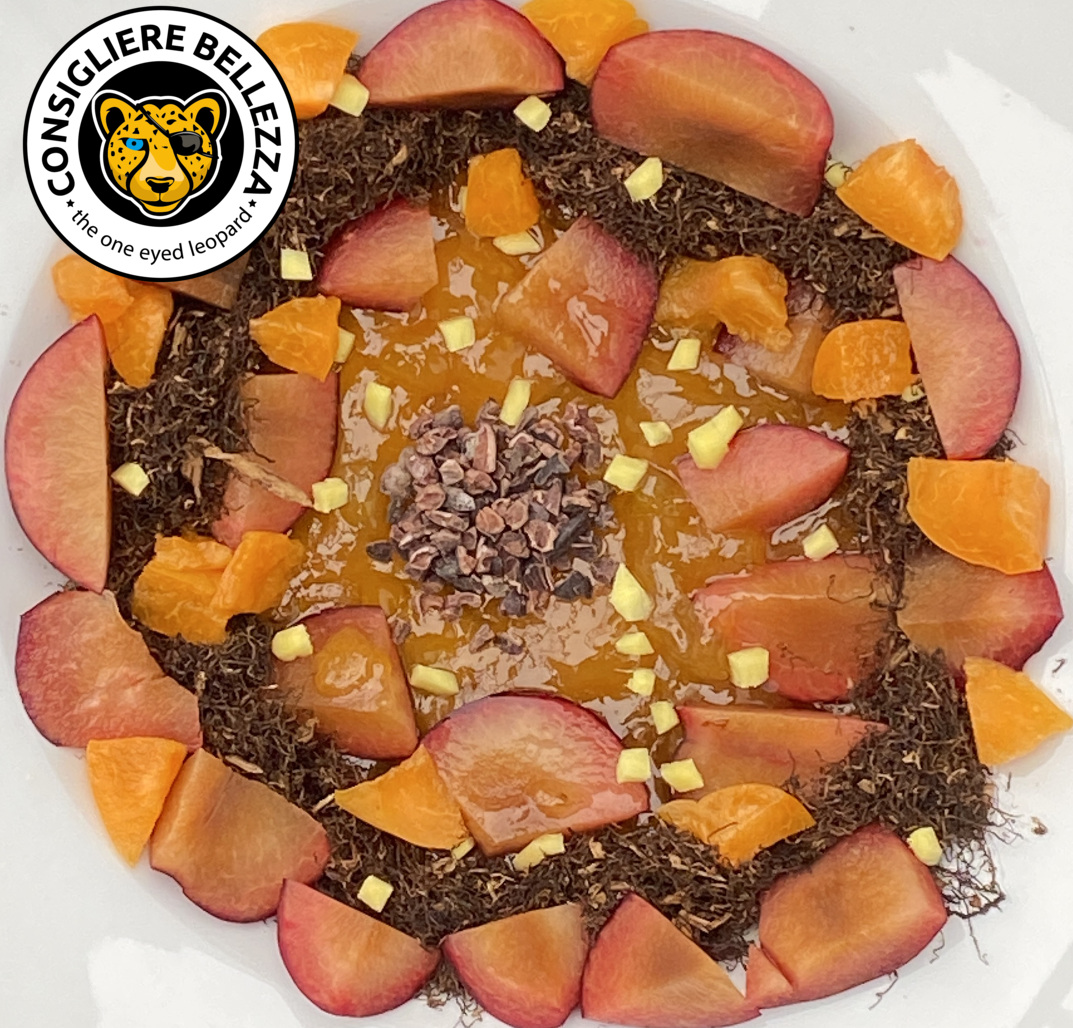With “Arabesque”, the most loved perfume of the brand The Merchant of Venice, we have a perfect follow up to the perfume of the last blog, “Armbre Narguile” by HERMES.
Both are based on plum, rum, and spices. One sniff and the world feels better and a certain warmth flows through the body. Both create a cozy, happy general sentiment. Smelling them with some time in between, one might think they are very similar. Comparing them directly, one understands they come from the same scent family, an oriental fruity gourmand, but have different personalities.
“Arabesque” is softer, more feminine. Sweet tobacco leaf is an integral part of the fragrance, a very sweet tobacco indeed. There is actually more sweetness than tobacco, which is exactly as I like it. Tobacco as a scent note can be overpowering (to my nose), when not managed wisely. “Arabesque” gives it a wonderful centre place, softened up by plums, cinnamon, some tonka beans, and a bit of ginger for good measure. And rum. The latter I smell clearly, but it is not on “Arabesque’s” list of scent notes on the brand website of The Merchant of Venice. Benzoin, musk, and vetiver are named as the base notes. They are not clearly recognisable, but they do give the perfume a beautiful, long, sweet finish. To summarize, the overall scent impression of the perfume is a very sweet tobacco perfectly immersed in plum jam.
The colours of “Arabesque” are lilac and light brown.
Usually the flacons of perfumes are of no great interest to me, even less the packaging, as the smell is all important. One must confess, though, that the flacons of The Merchant of Venice are pretty. The different perfume collections follow different patterns, “Arabesque” belongs to the “Murano Exclusive” line. The pattern on the “Arabesque” flacon is based on the Ca’ d’Oro palazzo in Venice.

The owners of the brand The Merchant of Venice, the Vidal family through their foundation Mavive, build an elegant story around the old trade routes starting in Venice. The name of the brand gives direct significance to the old Venetian trade routes – called “Mude” – that made Venice great in the 12th to 14th century. Venice is a city that found inspiration far away and created something beautiful. The reference to the trade routes shows the influence of Northern Africa, the Orient, and Asia on the style of Venice, here in the form of its best perfumes. Venice, back in the Middle Ages, was the centre of the trading world. The city was tiny, but mighty. Her ships were feared on all the seas and her tradesmen, most famous Marco Polo, went to the end of the known world and further to bring home riches and goods.
Venice had been a serious sea power for a long time, but the Venetians made their reputation in 1204, when through smart and unscrupulous politics the Doge Enrico Dandolo nudged the Fourth Crusade not to the Holy Lands, but to Constantinople, by then the richest city in the world. Enrico Dandolo, meaning Venice, had built the Crusaders ships and they did owe Venice a sack of money that they could never repay by normal means. To lay siege on a fellow Christian city and to sack it afterwards is a smear on the history of Venice that will never go away. Quite certainly back then the people in charge found reasons why it was basically unavoidable to plunder Constantinople. The loot they brought back to Venice graces the city still today – the famous “Horses of St. Marc’s Basilica” are only one example.
Naturally, the reputation of Venice afterwards was never quite the same again, but the city thrived on trade, ambition, courage, and little scruples. If you ever wondered why Venice became so beautiful as it is still today, it is the legacy of the sack of Constantinople and the ongoing trading activity during the Middle Ages. The Venetian tradesmen went where others did not dare to go.
Only the plague, the black death, hitting Venice twice, was able to break the cities streak of luck in the 16th century.
Without doubt, Venice has a very rich history. The Vidal family converted that history in a beautiful sweet-smelling legacy. Massimo Vidal, grandson of Angelo Vidal who got the family started in the body care sector in 1900, created the foundation Mavive (Massimo Vidal Venezia) in 1986. By now the fourth generation of the family is continuing and growing the business. They founded The Merchant of Venice in 2014. The Mavive website is easy to be found; google through it in case their other investments and disinvestments are of interest to you. The Vidals seem like classical representatives of the Venetian spirit. Active, looking for economic benefit, and at the same time honouring the history and the tradition of the city. In the Palazzo Mocenigo a perfume museum was constructed by Mavive in cooperation with the City of Venice. It complements the existing museum of garments and historical fashion.
“Arabesque” is a bestseller of The Merchant of Venice and a very good example of the brand. It is one of the warmest perfumes I know, enthralling almost everyone. Few people can resist Venice, if they have the city to themselves. “Arabesque” is an extremely well composed scent (with no perfumer or “nose” named), with a beautiful flacon, and a great story to come with it. The brand is well established by now, 10 years after it was founded. Due to its success and the refinement of the perfumes, it is a safe bet to predict The Merchant of Venice has a long and prosperous future based on tradition and beauty ahead of it.

